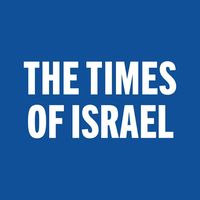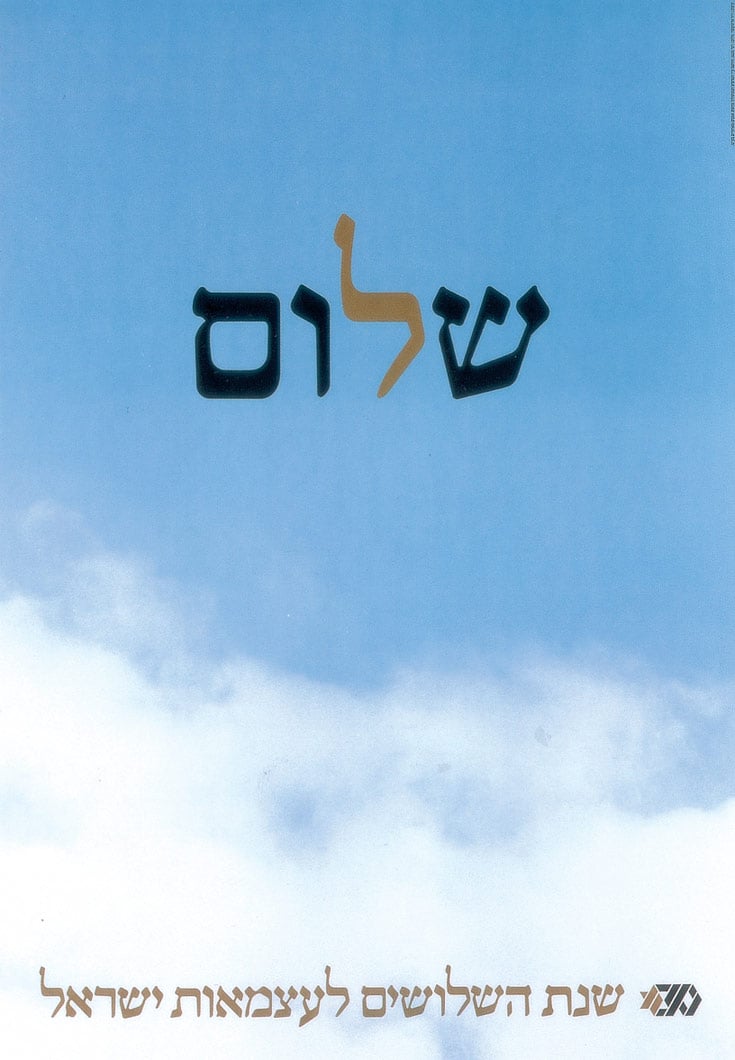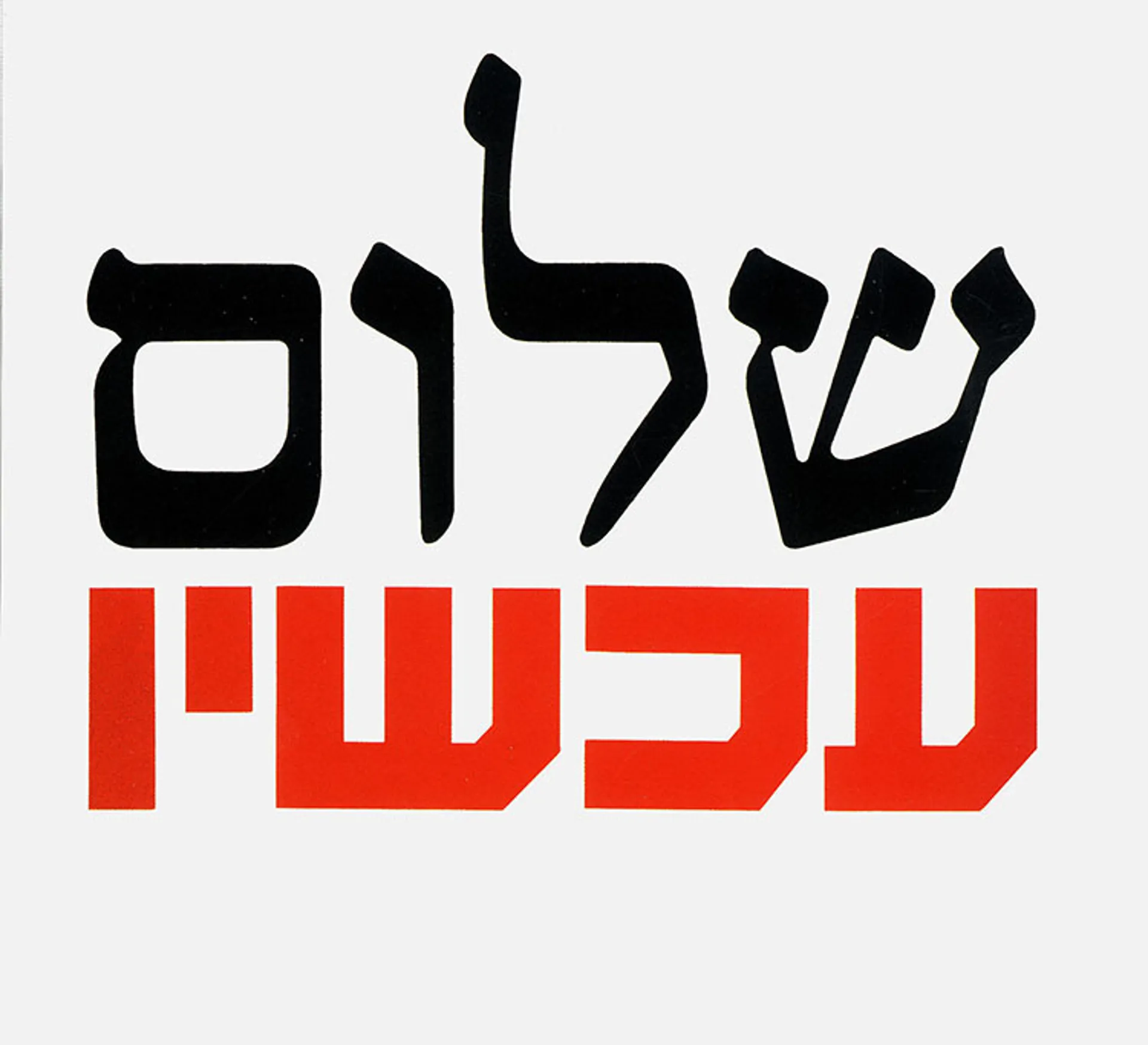



Artist and political activist David Tartakover died Tuesday at age 81. He suffered from Parkinson’s disease, according to Israeli media sources.
A graphic designer by training, Tartakover designed the iconic “Shalom” (Peace) poster and later created the emblem for Peace Now, with his work becoming one of Israel’s first political bumper stickers.
Tartakover created the “Shalom” emblem during a national poster competition marking 30 years of Israel’s independence in 1978, the first year of Prime Minister Menachem Begin’s administration, and the year before the signing of the Israel-Egypt peace treaty.
His logo became the official poster, and months later, Tartakover added the word “Achshav” (Now) to be used at a mass peace rally in Tel Aviv.
The iconic “Peace Now” logo combined two typefaces: “Shalom” in Koren, a traditional, biblical font, and “Achshav” written with Haim, a more modern font, explained Tartakover in numerous interviews. He set the typefaces in red and black, representing the movement’s demand for a peaceful two-state solution.
The Haifa-born designer, who served as a paratrooper in the Israel Defense Forces and later fought as a reservist in the 1973 Yom Kippur War, was a graduate of the Bezalel Academy of Arts and Design and also studied at the London College of Printing.
Tartakover began his career working for and designing Israel’s first television channel, and played a central role in training generations of future designers.
The artist was known for his left-wing political outlook, and created a collection of political posters that tracked Israel’s activities over the Green Line for more than three decades, using images of Palestinians and Israelis both inflicting and reeling from war, terror, violence and trauma.
As an artist, he did not wait for commissions but was known for tackling subjects and designing works that reflected societal sentiments.
Tartakover also worked as a curator, exposing local visual culture, putting on exhibits about Theodor Herzl at the Tel Aviv Museum of Art in 1978, an international poster exhibition at the Helena Rubinstein Pavilion in 1993, and Alex Levac’s photographs in 1994, among others locally and globally.
His works are part of major collections in Israel and worldwide, including the Museum of Modern Art (MoMA) in New York, the Jewish Museum in New York, the Library of Congress in Washington, the Stedelijk Museum in Amsterdam, the National Library in Paris, and museums of applied arts in Zurich and Hamburg.
Tartakover was awarded the Israel Prize in 2002. His work was the basis of a 2016 Tel Aviv Museum of Art retrospective titled ‘David Tartakover: The Exhibition’, which drew from nearly every area of his design work.
Tartakover was also considered one of the most important collectors of Israeli cultural items, with a personal archive that included thousands of advertising and propaganda posters from the 1920s and on, along with children’s games, product packaging and designers’ works.
In the past year, Tartakover was awarded the title of Honorary Citizen of Tel Aviv-Jaffa.
“More than anything, David Tartakover is a Tel Aviv-Jaffa native in every fiber of his being, and his visual works accompany all of us — in its streets, its cultural institutions, and on the city’s walls,” read the award committee’s statement.
“Tartakover has been a lifelong partner in the struggles for human rights, the advancement of peace, and the betterment of our society. Tel Aviv-Jaffa allowed him to be bold, sharp, and political, while at the same time providing him with the moral foundation to continue holding up a critical mirror to Israeli society and politics.”
He is survived by his daughter, Eli, and his grandson, Michael.


